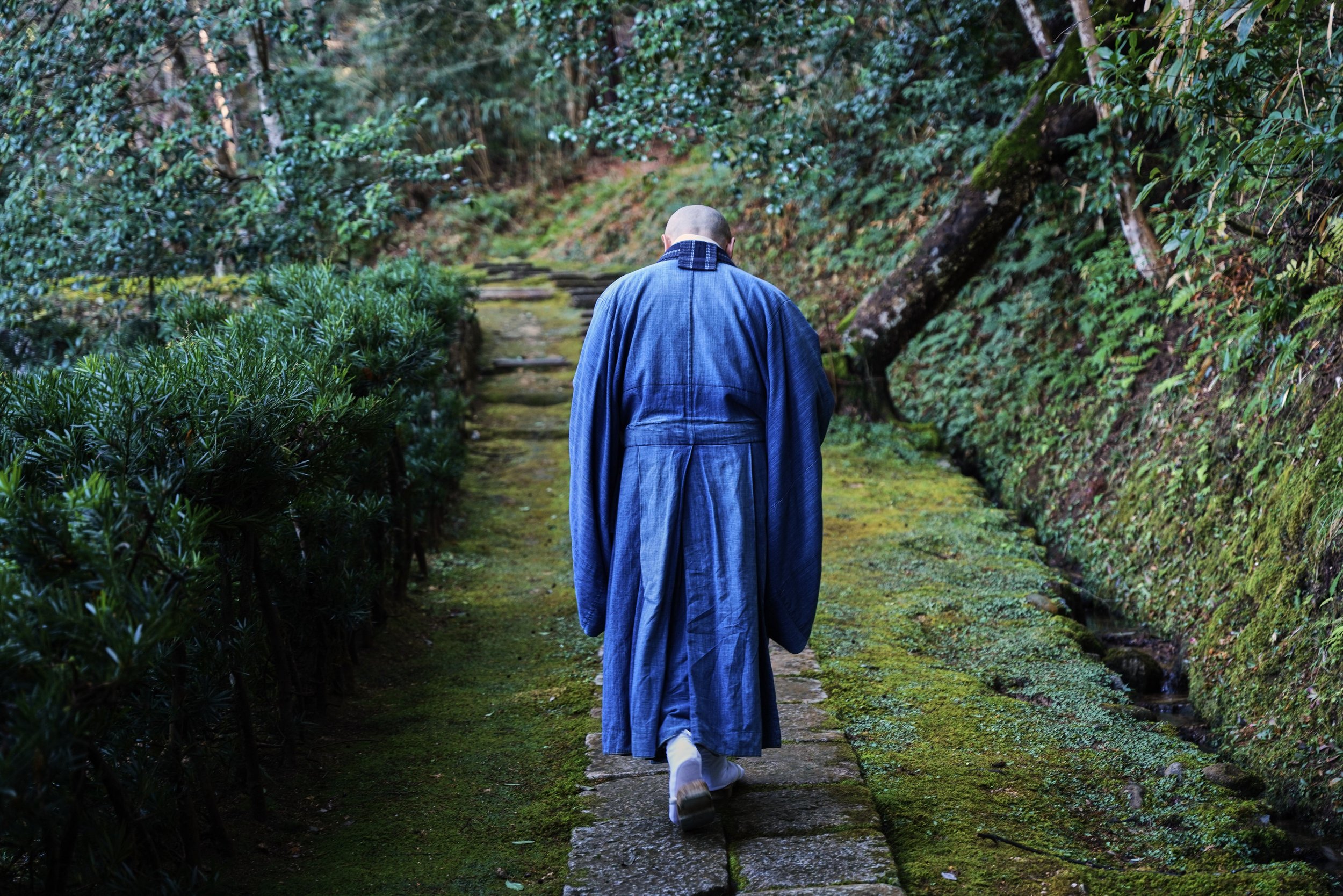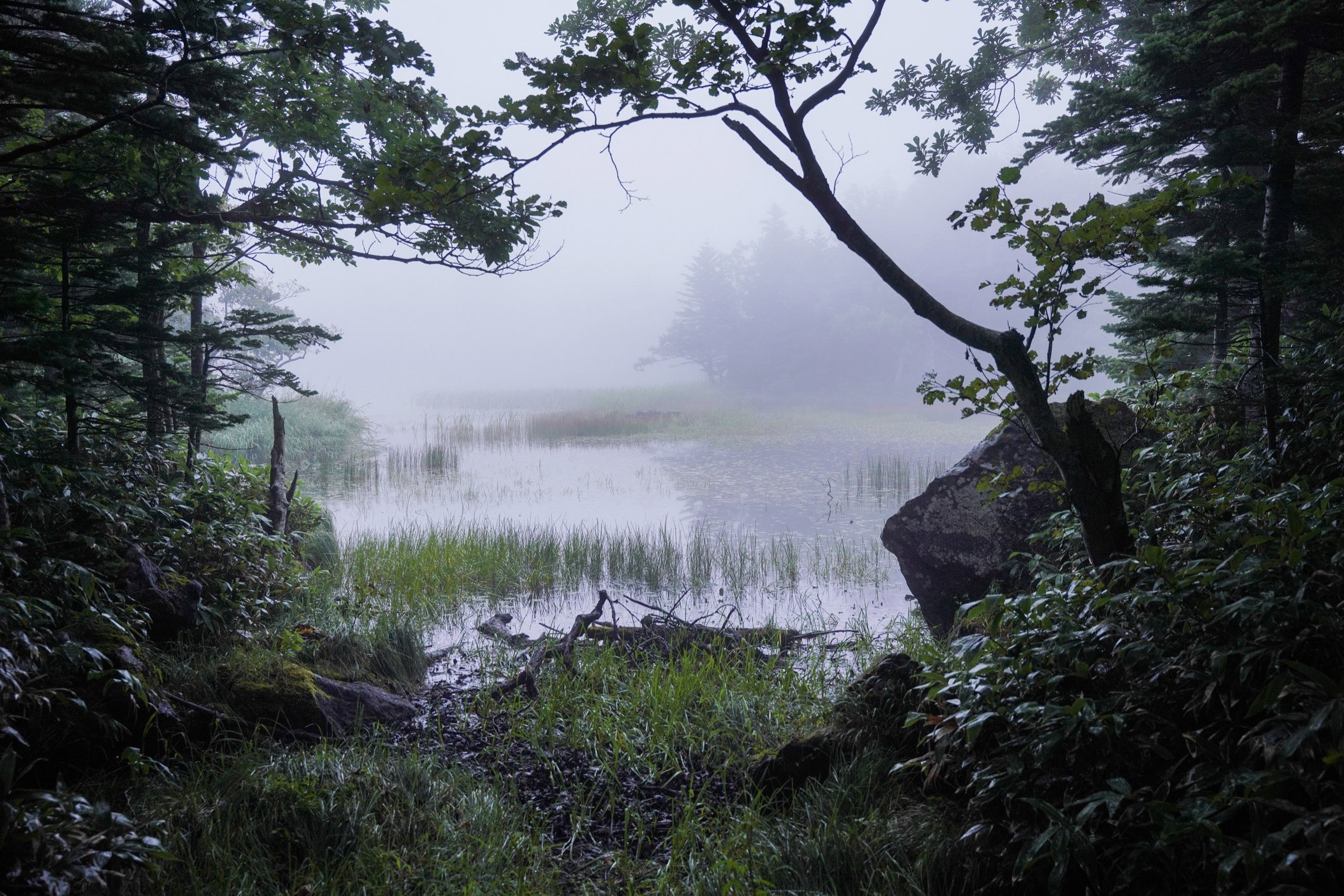In Praise of Silence: Japan’s Ancient Relationship to the Absence of Noise
By David McElhinney
deep silence
the shrill of cicadas
seeps into rocks
—Matsuo Basho, Deep Silence
(1689)
You’ve likely read it before: Tokyo is an “assault on the senses.” It’s a tired cliché, but one that’s illuminating in its own way. The Japanese capital is jam-packed with visual diversions and a host of smells that vie for your attention, but its soundscape is perhaps the most intrusive of all. In fact, scarcely a square-foot of city space exists where the ears are not assailed by some form of noise. Announcements and admonitions reverberate along train station platforms. Trucks advertising the hottest J-pop bands whizz around the streets of Shibuya as though spreading the word of a divine savior. Muzak renditions of Western pop classics pervade the air of every convenience store, while clerks greet shoppers with choruses of irasshaimase.
Indeed, a cacophony of sound is inextricable from big city life. But is it also stripping us of an essential quality that has long defined our connection to the world? “Silence must be excluded at all cost,” mused the late philosopher Roger Scruton, “since it awakens you to the emptiness that looms on the edge of modern life.” It might be a rather depressing notion, but it speaks to our increasingly estranged relationship with silence, an almost indescribable aural quality that was once part of the quotidian condition of our existence. Not only are we now deprived of silence, but we often think of it as “uncomfortable,” “awkward,” “eerie,” or even “deafening.”
Of course, it wasn’t always this way. For centuries, Japanese artists not only explored silence in their work but considered it a fundamental aspect of artistic expression. Take haiku as an example, a truncated form of poetic verse shorn of all unnecessary artifice. Yet even the great haiku poets used “cutting words,” called kireji, to signify a short pause – a brief moment of silence – as one thought transitions to the next. What exists in that momentary beat is left to the theater of the imagination, suggesting an idea more powerful than mere words could ever express.
The late Japanese anthropologist Takie Sugiyama Lebra took this concept even further in her essay, The Cultural Significance of Silence in Japanese Communication:
“The cultural cultivation of silence, if I may digress a little, is best manifested in traditional music, in which silent intervals called ma are central while sounds play an auxiliary role in marking ma. Similarly essential to Japanese painting is the painter’s awareness of the expressiveness of blank space, the spatial metaphor of silence, whether within or outside the picture frame. In theatrical dancing, kabuki performance, or even in film, too, freeze in motion may convey a peak of emotional intensity.”
It’s in art’s blank, liminal or silent phases that audiences are asked to consider the artist’s true intent. But it’s also paradoxical in a way: to encourage profound thinking, first one is encouraged to clear the mind. Japanese novelist Junichiro Tanizaki appreciated this kind of restraint. In a 1933 essay titled In Praise of Shadows, he explored his innate desire to live in a world where the barrage of external stimuli had returned to base levels. In Praise of Shadows is, first and foremost, an insight into Tanizaki’s aesthetic ideal. He treasured the absence of artificial light in traditional Japanese design and believed the Japanese were a people designed to exist, aesthetically speaking, in shadow. His ideal was defined not simply by a world where shadows dance in the flicker of candlelight but rather a world where the absence of noise invites powerful levels of introspection. In Praise of Shadows is written in wandering, stream-of-consciousness prose, with frequent diversions into hyperbole and humor. And there is a reason it’s still in print 90 years later. Tanizaki understood that his desire was hardwired into all of us.
“No words can describe that sensation as one sits in the dim light, basking in the faint glow reflected from the shoji, lost in meditation or gazing out at the garden,” he wrote of sitting on a toilet in a Japanese temple. “And surely there could be no better place to savor this pleasure… surrounded by tranquil walls and finely grained wood, one looks out upon blue skies and green leaves… As I have said there are certain prerequisites: a degree of dimness, absolute cleanliness, and quiet so complete one can hear the hum of a mosquito.”
What did Tanizaki deem necessary about a “quiet so complete?” Was it the silence itself, or what that silence allowed him to think, to feel, to experience? Part of what makes this difficult to answer is that we all have our own definitions of silence and how we perceive it.
This manifests itself in the different ways that Japanese and Western cultures think of silence today. In Japan, silence is often viewed as a fundamental aspect of communication; a sign that someone is considering their next thought rather than blurting out the first thing that comes to mind. Whereas in the West, silence needs to be filled, it’s a block of wasted time that could instead be used to advance the conversation forward. Speech is silver, as they say, but silence is golden.
“The roots of our English term ‘silence’ sink down through the language in multiple directions,” wrote George Prochnik in his book, In Pursuit of Silence. “Among the word’s antecedents is the Gothic verb anasilan, a word that denotes the wind dying down, and the Latin desinere, a word meaning ‘stop.’ Both of these etymologies suggest the way that silence is bound up with the idea of interrupted action.”
The Japanese etymology of “silence,” or chinmoku (沈黙), is also concerned with change. Chin (沈) represents things that are sinking, submerging, or becoming calm. While moku (黙) refers to the state of being quiet or not speaking.
From an anthropological standpoint it makes sense: primitive human beings needed to detect minute changes in their auditory environment. Silence was important for hunting and avoiding prey, it played an important role in religious and spiritual ceremonies and was linked to early monastic practices and shamanic life. It also enabled people to learn through observation and by listening – to the distant rumblings of a potentially adversarial tribe, to the snarling and rustling of hidden fauna, or to the gentle babble of a nearby water source.
If we think of silence, therefore, as a phenomena that heightens our perceptual awareness, it is easy to see why it was so integral to life in ancient Japan. Buddhism, which proliferated throughout Japan in the 7th century, emphasizes the “six roots of perception:” sight, sound, smell, taste, touch, and thought. And silent spaces allowed these roots of perception to flourish.
While Japan is now deemed one of the world’s least religious countries, Buddhism still holds a substantial amount of cultural significance, and the practices that spawned from it still draw travelers seeking to immerse themselves in and receive the benefits of silence. Zazen meditation is no longer the sole domain of monks living out an ascetic existence. The practice of spending extended periods each day sitting in a position of quiet repose has proved so valuable that even doctors and psychotherapists are prescribing it as a treatment.
The tea ceremony was also once viewed as an esoteric ritual that belonged in the halls of Oriental antiquity. But it is now finding traction again in the age of wellness travel. An exercise in discipline, participants are requested to empty all thoughts, to quiet the mind and appreciate the soft registers of sound and rhythmic movements of the host presiding over the ceremony. It is about ichi-go ichi-e, appreciating the beauty of a moment that can never be repeated, and fostering a sense of inner peace.
Shinrin-yoku, or “forest bathing,” is another mainstay in the Japanese Buddhist’s repertoire. And it too has come into vogue as a wellness panacea. Japan now has 65 registered forest therapy sights across the country, with studies showing that shinrin-yoku improves sleep quality, mood, ability to focus, and stress levels. Moreover, it has minimal barriers to entry; all you need is access to a forest, a half-decent pair of walking shoes, and the will to leave all technological devices at home. Simply step into the outdoors and embrace the absence of jarring stimuli. Listen to birds chorus in the trees or the snap and crackle of twigs underfoot. Pass your hand across a mossy tree trunk and feel the breeze as it drifts through your outstretched fingers. Look at sunlight splitting the trees, smell the morning dew.
There is an obvious corollary to all of this: To praise silence is, in effect, to malign the distractions of modern life. But perhaps that is also too reductive a viewpoint. The euphony of Japan’s natural world and the cacophony of its urban metropolises represent two sides of the same coin. Could living, as most of us do, submerged by noise, enhance our ability to understand what quietude can teach us?
When one makes the decision to live in a city or an industrialized area, one accepts the tradeoffs one has to make. But Japanese history and art, its traditional culture and ways of life, remind us of what we have left behind in that silence. The oneness with nature. The connection to our past. The appreciation of all that is essential.
About the Author: David is a Northern Irish freelance journalist, writer and occasional editor based in Tokyo and the UK. Fusing reporting and social commentary with extensive experience traveling throughout the country, he has published stories on travel, arts and culture, politics and current affairs, and sports in Japan. His work has appeared in a range of national and international publications online and in print. You can find links to his work at www.davidmcelhinney.com.








